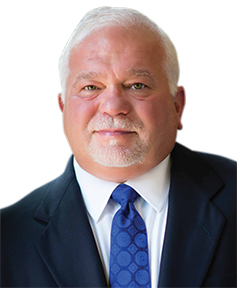In Part 4 of this series, I am finally getting to the team no one thinks of when it comes to building a comprehensive safety plan: the safety team (insert tongue in cheek here — and yes, this is why they pay me the big bucks!)
I am also going to address the importance of a mentorship program that works in conjunction with the safety team.
The First Year
While not all carriers hire fresh Class-A CDL graduates, many carriers DO hire drivers with less than one year of experience. Many companies have adjusted down their experience requirement in the past decade — but how much have their safety programs changed in response to the needs of less-experienced drivers and heightened regulations?
Studies show that, regardless of age, drivers with less than one year of driving experience pose the greatest safety risk in terms of violations and crashes. Providing these inexperienced drivers with mentorship from experienced drivers during the first year — on top of additional coaching or training from your safety team — is highly recommended.
So, what does that look like?
My favorite answer to give (and the one all lawyers are trained to provide) is, “It depends.”
It depends on your company’s safety challenges, company culture and the resources you have available in manpower, technology and training development skills. Any of this can be outsourced, but maintaining your company values and unique policies in these programs will still take some manpower from your safety team in guiding the external team and reviewing their work.
Mentorship Programs that Actually Work
For a mentorship program to work, your mentors must be engaged and shining examples of your company’s culture. Just as with your road trainers, it’s vital to regularly connect with your mentors and give them a voice in program development and a voice in changes they would like to see in the company.
You certainly want mentors who are passionate about developing others, but in order for this to be viewed as a professional part of their job, you should provide some type of compensation for their time and efforts — and specify goals to which you can hold them accountable in order to receive their compensation.
Mentors having a minimum of one year of experience driving and a fantastic safety record is an obvious must, but they should also have a positive view of your safety team. Mentors further establish your company’s values and when/how the mentees should engage with office employees.
The same can be said for the safety technology on the trucks. Mentees are likely to adopt a similar perspective to their mentors have regarding the tech your safety team has carefully chosen. Ideally, your mentors share the same convictions your safety team has. After all, they are acting as your safety team in the field!
When pairing mentors to mentees, carefully consider each person’s background, personality and hobbies. Those with similar interests will be most likely to result in a productive and happy match.
Depending on the nature of how your freight moves, you may want to develop a mentorship “hotline” that gives newer drivers an opportunity to reach another mentor if their assigned mentor is unavailable. Another option would be to have a 24/7 on-call safety member who can either answer the question or look up another mentor who may be available.
Effective Safety Teams
For your safety team to be most effective in your fleet, developing relationships and trust is key.
Sometimes having the right title and/or experience can garner enough respect to get someone to truly listen to you and help change their life, but this is rare. Most often, the people we trust have our individual best interest at heart are the ones who change our lives. For example, even with my impressive J.D. degree and decades in trucking (placing tongue firmly in cheek here while pausing for dramatic effect), I still expect those of you who have met me are far more likely to consider my advice in these articles.
For your drivers to believe you genuinely care about them, they need to feel they know you and that you understand and appreciate the challenges of their job.
The first year, when less-experienced drivers are your highest risk, is the most impactful time for you to be calling, listening to what they’re facing and coaching them weekly (or monthly, depending on the size of your fleet).
Important advice: Listen first, coach second. This is coming from someone who loves to talk, but I also love to learn — and learning comes from listening. This is likely to positively affect your retention as well.
Another option is to assign regular training goals using a system that lets you monitor completion rates. Incompletion must have consequences!
Why is this important? First, it shows you believe your program is important and makes a difference. If you don’t, why should the drivers believe in it? Second, if a driver gets into an accident and you must turn over records showing that the driver has not completed any assigned safety training for months, it paints a poor picture of both the driver’s and the company’s commitment to safety.
For the most effective training, you’ll need to measure the causes of accidents and violations at your company. I encourage you to share in your training some metrics to show how serious these mistakes are for the company and for other drivers.
How much are these accidents/violations costing the company? How much downtime does a driver experience following this type of accident? How are these safety issues impacting the company’s and drivers’ CSA scores? What does it mean for the company and drivers if you hit intervention levels in that category? If you can reduce it by X%, what do you estimate the savings will be?
These topics are really great for your entire fleet.
Also, if you love a good debate like me — and can take the time to reinforce you’re all on the same team — share the experience level of the drivers having these accidents.
Most often, experienced drivers are certain it’s always the new “whippersnappers” having all the accidents. While we do see drivers in their first year have the most accidents, they are far from the only ones having accidents. In fact, share the most common accident in each band of experience.
Everyone can be part of reducing accidents, and no one is immune from having one. If you can share metrics that apply to each driver and can convince them that each individual action matters, you are more likely to get their attention. It can also be a good tactic to recruit for mentors.
Speaking of metrics …
Part 5 in this series is focused entirely on building powerful assessments and metrics to bolster your safety program and direct ongoing changes for the better. This applies at every step in your program. You cannot build a safety program that works if you are not unbiased in measuring its impact and continuing to adjust as the demographics, technology and needs in your fleet evolve.
Brad Klepper is a regular contributor to The Trucker, providing valuable information for drivers and motor carriers. He is also president of Interstate Trucker Ltd., a law firm entirely dedicated to legal defense of the nation’s commercial drivers. Brad is also president of Driver’s Legal Plan, which allows member drivers access to his firm’s services at discounted rates. For more information, contact him at (800) 333-DRIVE (3748) or interstatetrucker.com and driverslegalplan.com.






